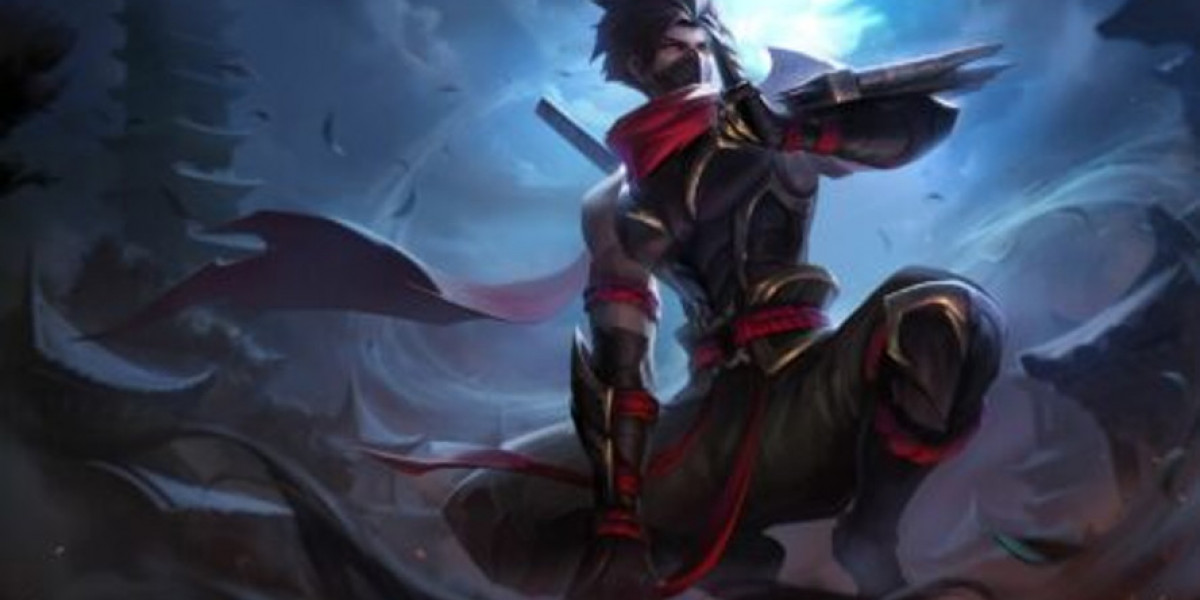Original Title: Application of LARS Ligament Combined with 3D Printed Prosthesis in Reconstruction of Radial Half Wrist Joint after Tumor Resection Chinese Journal of Reparative and Reconstructive Surgery Ding Hao, Shao Xianhao, Yang Qiang, Li Ka, Li Jianmin, Li Zhenfeng Department of Bone Oncology, Qilu Hospital, Shandong University (Jinan 250000) Corresponding author: Li Jianmin, Email: gkljm@163.com; Li Zhenfeng, Email: zhenfengli163@163.com Key words: Distal radius; Bone tumor; LARS ligament; 3D-printed prosthesis; Hemi-wrist reconstruction Citation: Ding Hao, Shao Xianhao, Yang Qiang, et al. Application of LARS Ligament Combined with 3D Printed Prosthesis in Reconstruction of Radial Half Wrist Joint after Tumor Resection. Chinese journal of reparative and reconstructive surgery , 2022, 36(7): 822-827. doi: 10.7507/1002-1892.202202086 Summary Purpose To investigate the effect of LARS ligament and 3D printing prosthesis on the reconstruction of the radial half wrist joint after distal radius tumor resection. Method From September 2017 to March 2021, the clinical data of 12 patients with distal radius tumor resection combined with LARS ligament and 3D printing prosthesis for radial half wrist reconstruction were retrospectively analyzed. There were 7 males and 5 females with an average age of 41.8 years (range, 19-63 years). There were 8 cases on the left side and 4 cases on the right side. There were 10 cases of giant cell tumor of bone and 2 cases of osteosarcoma. The course of disease ranged from 1 to 20 months, with an average of 8.1 months. The length of osteotomy, operation time and intraoperative blood loss were recorded, and the wrist function was evaluated by Mayo score and American Musculoskeletal Oncology Society (MSTS) score before and after operation; The range of motion (ROM) of the wrist joint was measured, including dorsiflexion, flexion, radial deviation and ulnar deviation.Bone ingrowth and osseointegration at the bone-prosthesis interface of the wrist joint were observed by imaging follow-up, and the occurrence of wrist complications was recorded. Result The operation was successfully completed in all 12 patients, with an average osteotomy length of 6. 8 cm (5. 0 to 10. 5 cm), an average operation time of 213. 8 min (180 to 250 min), and an average intraoperative blood loss of 61. 7 mL (30 to 150 mL). All patients were followed up for 11 to 52 months, with an average of 30.8 months. Imaging follow-up showed that bone ingrowth and osseointegration at the bone-prosthesis interface were observed in all patients, and biological fixation was gradually achieved. During the follow-up period, the stability, motor function and range of motion of the wrist joint were good, and there were no complications such as arthritis, subluxation, prosthesis loosening, infection, tumor recurrence and metastasis. Mayo score and MSTS score at the last follow-up were (82.1 ± 5.4) and (27.5 ± 1.5), respectively, which were significantly improved compared with (48.8 ± 13.5) and (16.4 ± 1.4) before operation (t = − 10.761, P 0.001; t = − 26.600, P 0.001). The grip strength of the affected side was 59% ~ 88% of that of the healthy side, with an average of 70.5%. Wrist ROM was 55 ° to 80 ° in dorsiflexion (mean 65.42 °), 35 ° to 60 ° in flexion (mean 44.58 °), 10 ° to 25 ° in radial deviation (mean 17.92 °) and 10 ° to 25 ° in ulnar deviation (mean 18.33 °). Conclusion Expand the full text The combined application of LARS ligament and 3D printing prosthesis is an effective way to reconstruct bone and joint defects after distal radius tumor resection, which can improve wrist function, reduce complications and improve wrist stability. Text Clinically, giant cell tumor of bone is more common in distal radius, and other bone tumors can also invade the site, and the tumor often invades the wrist joint, affecting its function. In order to reduce the possibility of recurrence and improve the prognosis, most of the invasive, benign and malignant tumors of the distal radius need en bloc resection and reconstruction. The traditional reconstruction of radial half wrist joint mostly uses autogenous fibula, which has some disadvantages, including progressive degeneration, wrist instability and long operation time [1-4]. In addition,Titanium welding pipe, the artificial semi-wrist prosthesis is initially used in clinic, but there are also common complications such as wrist subluxation and aseptic loosening, and the instability of surrounding soft tissue support can also lead to the failure of prosthesis implantation [1]. On this basis, further improvement of bone and joint reconstruction conditions around the prosthesis can achieve more reliable biological fixation, improve the survival rate of implants and improve the long-term function of wrist joint. Compared with hip arthroplasty with mature technology and satisfactory results [2,5], hemi-wrist arthroplasty needs to consider individual differences, complex anatomical structure, residual joint capsule reconstruction, solid bone and soft tissue reconstruction to achieve more satisfactory wrist function, so the reconstruction method is more complex [1]. The LARS ligament is an artificial fabric made of polyethylene terephthalate with excellent biocompatibility for cellular and connective tissue ingrowth [3,6]. In previous studies, LARS ligaments have been used for soft tissue reconstruction in limb salvage surgery for humeral, femoral and tibial tumors, which can effectively improve postoperative function [6-9]. In addition, 3D printing prosthesis, as an effective method for repair and reconstruction, has been preliminarily confirmed as a suitable choice for semi-wrist reconstruction after distal radius resection [10-11]. However,Titanium 6Al4V wire, there have been no studies on the combined use of LARS ligaments and 3D-printed prostheses for the reconstruction of the distal radial hemi-carpal joint, nor in other appendicular skeletons. Based on this clinical demand, we designed a combined implant of LARS ligament and 3D printing prosthesis, and carried out preliminary clinical application. The clinical data of 12 patients with distal radius tumor resection combined with LARS ligament and 3D printing prosthesis for radial half wrist reconstruction from September 2017 to March 2021 were retrospectively analyzed. The report is as follows. 1 Clinical data 1.1 General information There were 7 males and 5 females with an average age of 41.8 years (range, 19-63 years). There were 8 cases on the left side and 4 cases on the right side. There were 10 cases of giant cell tumor of bone and 2 cases of osteosarcoma. The course of disease ranged from 1 to 20 months, with an average of 8.1 months. The general information of the patients is detailed in Table 1. 1.2 3D Printed Prosthesis and LARS Ligament Design The 3D-printed prosthesis (Beijing Lidakang Technology Co., Ltd.) consists of three parts, including a custom polymer polyethylene liner, a 3D-printed titanium shaft, and a proximal intramedullary stem. Taking the distal radius of the healthy side of each patient as the design template, combined with the three-dimensional reconstruction data of the affected radius, the distal, ulnar and radial edges of the polyethylene liner were individually designed to achieve the precise matching of the residual radiocarpal joint, distal radioulnar joint and brachioradialis tendon. At the same time, there are prefabricated holes on the edge of the polyethylene liner for the suture and fixation of the surrounding soft tissue and joint capsule, and also provide anchor points for the fixation of LARS ligament before prosthesis implantation. Based on the individual anatomical characteristics of the patient and the area and length of the bone defect, the titanium shaft and the proximal intramedullary stem were customized as a whole, and the titanium particle coating was prepared on the surface of the intramedullary stem, which could better promote bone ingrowth and osseointegration. See Figure 1A. The LARS ligament (LARS, France) is a 40 cm × 6 cm piece of industrial-strength, high-toughness polyester fiber (polyethylene terephthalate), which is tightly sutured to the 3D-printed prosthesis through a prefabricated hole in an appropriate area, so that the LARS ligament tightly wraps the prosthesis (Fig. 1b) to prevent loosening. Fig. 1 Intraoperative application of 3D printing prosthesis and LARS ligament a. 3D printed prosthesis 1: Polyethylene liner 2: 3D printed titanium shaft 3: Proximal intramedullary stem; B. During the operation The LARS ligament was tightly sutured to the prosthesis through a preformed hole. 1.3 Operation method The patient was placed in the supine position under general anesthesia. The distal radial approach was used to dissect the superficial soft tissue. According to the extent and nature of the lesion, part of the radioulnar joint, radiocarpal joint capsule and brachioradialis tendon were carefully preserved, and the pronator quadratus muscle and dorsal extensor tendon were preserved as far as possible. According to the preoperative imaging examination, the lesion was resected within a safe range and the proximal radius was osteotomized. The radius was reamed, the prosthesis was installed, the 3D printed prosthesis wrapped with LARS ligament was used to repair bone and soft tissue defects, and the wrist joint capsule, ulnar-radial joint capsule and brachioradialis tendon were tightly sutured with the prefabricated holes around the prosthesis properly, firmly and accurately to ensure its multi-directional stability. Prevent displacement of the surrounding soft tissue relative to the LRAS ligament and prosthesis, and the LARS ligament relative to the prosthesis, while reducing potential dead space. The proximal intramedullary stem was fixed with bone cement or biological fixation according to the specific situation. After all steps were completed, radiographs were performed to ensure satisfactory implant placement. 1.4 Postoperative treatment and follow-up index The wrist was fixed in the hyperextension position for 14 to 21 days after the operation. After the brace was removed, the patient was advised to perform multidirectional exercises, including dorsiflexion, 3d titanium wire ,titanium tubing price, palmar flexion, radial deviation, ulnar deviation, and rotation. The length of osteotomy, operation time and intraoperative blood loss were recorded. Radiological follow-up was performed every month in the first 3 months and every 3 months thereafter to observe the bone ingrowth and osseointegration at the bone-prosthesis interface of the wrist. Before and after the operation, Mayo wrist function score and American Musculoskeletal Oncology Society (MSTS) score were used to evaluate the wrist function after reconstruction from pain, activity and other aspects [12-13]. The grip strength of the affected limb was expressed as a percentage of the grip strength of the healthy upper limb, and the range of motion (ROM) of the wrist joint was measured, including dorsiflexion, flexion, radial deviation and ulnar deviation; the occurrence of wrist complications was recorded [3,14]. 1.5 Statistical methods All data were analyzed by SPSS23.0 statistical software. The measurement data were subjected to normality test and were in line with normal distribution. The data were expressed as mean ± standard deviation, and paired t test was used for comparison before and after operation; the test level was α = 0.05. 2 Result The osteotomy length was 5. 0 to 10. 5 cm, with an average of 6. 8 cm; the operation time was 180 to 250 min, with an average of 213. 8 min; and the intraoperative blood loss was 30 to 150 mL, with a mean of 61. 7 mL. All patients were followed up for 11 to 52 months, with an average of 30.8 months. Imaging follow-up showed that bone ingrowth and osseointegration at the bone-prosthesis interface were observed in all patients, and biological fixation was gradually achieved. During the follow-up period, the stability, motor function and range of motion of the wrist joint were good, and there were no complications such as arthritis, subluxation, prosthesis loosening, infection, tumor recurrence and metastasis. At the last follow-up, the Mayo score and MSTS score were (82.1 ± 5.4) and (27.5 ± 1.5), respectively, which were significantly improved compared with (48.8 ± 13.5) and (16.4 ± 1.4) before operation, and the difference was statistically significant (t = − 10.761, P 0.001; t=−26.600,P0.001)。 The grip strength of the affected side was 59% ~ 88% of that of the healthy side, with an average of 70.5%. Wrist ROM was 55 ° to 80 ° in dorsiflexion (mean 65.42 °), 35 ° to 60 ° in flexion (mean 44.58 °), 10 ° to 25 ° in radial deviation (mean 17.92 °) and 10 ° to 25 ° in ulnar deviation (mean 18.33 °). See Table 1 and Figure 2. Fig. 2 Patient, female, 33 years old, giant cell tumor of left distal radius a. Preoperative X-ray film; B. Intraoperative tumor resection and prosthesis installation ;c、d. Postoperative immediate AP and lateral position X-ray film showed that the prosthesis implantation was satisfactory; e, f. Postoperative At 7 months, anteroposterior and lateral X-ray films showed bone ingrowth and osseointegration; G ~ J. Postoperative Wrist function at 11 months 3 Discussion 3.1 Limitations of previous methods for reconstruction of the radial half of the wrist With the development of comprehensive treatment and surgical techniques, the prognosis of patients with bone tumors has been significantly improved. On this basis, how to shorten the operation time, reduce the incidence of postoperative complications and obtain better limb function has become an urgent problem to be solved. Complications such as articular cartilage degeneration, separation of the distal radioulnar joint, and nonunion often occur when using traditional fibular autograft to reconstruct the hemi-wrist joint after resection of a bone tumor in the distal radius [3-4, 15-16]. As a new type of implant, 3D printing prosthesis has been initially applied to the repair and reconstruction of bone and joint defects after tumor resection in extremities [17-18]. Wang et al. [10] pointed out that the application of 3D printing prosthesis for semi-wrist reconstruction after resection of giant cell tumor of distal radius has irreplaceable advantages in improving wrist function. Firstly, the matching polyethylene liner was made according to the contralateral radius, and the shape was anastomosed; secondly, the medullary cavity of the radial shaft was matched with the customized prosthesis stem, which could avoid the rotation of the prosthesis during implantation; thirdly, there were 7 to 8 small holes on the distal edge of the prosthesis, which provided enough space and anchor points for joint and soft tissue reconstruction. However, if there is no reliable soft tissue ingrowth to provide sufficient fixation strength for 3D printing prosthesis reconstruction, complications such as subluxation and aseptic loosening may also occur [6,8]. Wang et al. [10] observed 3 cases (20%) of wrist subluxation and 3 cases (20%) of distal radioulnar joint separation. Covering the prosthesis with biocompatible materials to improve the stability of soft tissue is one of the feasible improvement methods. Synthetic mesh, including synthetic tube, LARS ligament and other types, is mainly used to wrap and cover the prosthesis in a tubular manner, which has been applied in the resection of proximal humeral tumors and prosthesis reconstruction, and the improvement of shoulder function after surgery has also been preliminarily confirmed [8]. LARS ligament can reconstruct the joint capsule, improve joint stability, enhance soft tissue strength, reduce dislocation rate, and enable patients to obtain better limb function and greater range of motion [7-9]. The above views provide justification and feasibility for the use of LARS ligaments in this study. In the functional reconstruction of wrist joint, although one case of autogenous fibular graft wrapped with synthetic mesh has been reported in the literature, and the results show that positive progress has been made in preventing postoperative wrist dislocation [19], the research on the use of synthetic mesh in distal radius tumor resection and semi-wrist joint reconstruction is still very limited. 3.2 Advantages of combined reconstruction of LARS ligaments and 3D-printed prostheses Compared with other reconstruction methods, the application of LARS ligament in this study significantly enhanced the stability of prosthesis, joint capsule and surrounding soft tissue, greatly promoted the improvement of wrist function after operation, and effectively reduced the occurrence of complications. Specifically, through the suture of the residual radiocarpal joint capsule, the residual radioulnar joint capsule and the brachioradialis tendon, the structural stability of the distal, anterior, posterior, medial and lateral soft tissues was enhanced respectively, while the soft tissues around the lesion were tightly sutured with the LARS ligament and the prosthesis from the distal to the proximal end to form a tightly integrated soft tissue package. Potential differences in soft tissue stability in different orientations are reduced and the likelihood of soft tissue loosening relative to the prosthesis is reduced. In addition, the customized polyethylene liner perfectly matches the residual articular surface of each patient, avoiding the complications of wrist dislocation and subluxation after traditional reconstruction methods. The polyethylene liner and the preformed hole in the distal titanium shaft can not only be used to precisely suture the residual soft tissue on the prosthesis during the operation, but also help to firmly integrate the LARS ligament with the 3D-printed prosthesis before the operation, and also provide a simple and effective anchor point for soft tissue ingrowth. The application of 3D titanium coating on the intramedullary stem provides the interface conditions of biostimulation and microporous structure, which can effectively promote bone ingrowth and osseointegration, thus effectively reducing the occurrence of nonunion and delayed union of the implant. In this study, bone ingrowth was observed at the proximal bone-prosthesis interface to facilitate biofixation. Based on the advantages of fully wrapped structure, tight suture and combination of bone and soft tissue, this study has achieved satisfactory clinical results in wrist function and complication rate after operation. Mayo score and MSTS score after operation are (82.1 ± 5.4) and (27.5 ± 1.5) respectively. It is similar to or even better than the prognosis results reported in the literature (Mayo score and MSTS score are 71.0 and 24.5, respectively [10-11]), which also verifies the advantages of 3D printing prosthesis in bone tumor defect reconstruction. Compared with traditional reconstruction methods, the combination of LARS ligament and 3D printing prosthesis can achieve better joint stability and motor function through the close combination of joint capsule and surrounding soft tissue and personalized reconstruction of wrist joint. The combination of temporary fixation and functional exercise in the early stage after operation is beneficial to the regeneration of soft tissue. Patients are usually immobilized in hyperextension because volar flexion forces are generally stronger and volar subluxations are more common [1,3]. Postoperative functional exercise should be combined with multi-directional exercise, including dorsiflexion, flexion, radial deviation, ulnar deviation and rotation, in order to promote the multi-directional synchronous improvement of wrist range of motion. According to the different methods of prosthesis fixation, there are differences in the range of postoperative exercise between patients with bone cement fixation and patients with biological fixation. The range of exercise in patients with biological fixation is usually more limited, which leads to the relatively poor long-term wrist function. Due to the small number of patients, no statistical analysis was performed in this study. 3.3 Limitations This study has the following limitations. First, due to the small number of patients with distal radius tumors and the short duration of combined application of LARS ligament and 3D-printed prosthesis, the number of patients participating in this study is limited, and a multi-center, large-scale and long-term study is needed as a new reconstruction method. Secondly, this study lacks comparative studies with other semi-wrist reconstruction methods, such as autogenous fibular graft reconstruction and simple 3D printing prosthesis reconstruction. Third, because of the complexity of the reconstruction method, surgeons with skilled operation skills are required to perform intraoperative suture reconstruction. Fourthly, the patients were clearly informed of the characteristics of the combined reconstruction method of LARS ligament and 3D printing prosthesis before operation, which led to the selection bias. To sum up, compared with the traditional semi-wrist reconstruction method, the combination of LARS ligament and 3D printing prosthesis has achieved better postoperative function and reduced the incidence of complications. This satisfactory preliminary result may be attributed to the advantages of LARS ligaments and 3D-printed prostheses in reconstructing bone and joint defects and the application of special surgical techniques. This novel and effective modality of reconstruction for patients with bone and joint defects caused by aggressive tumors of the distal radius may broadly improve the overall outcome and deserves further exploration. References: omitted This article cover picture originates from the network, the invasion deletes. CJRRS Chinese journal of reparative and reconstructive surgery This article is reprinted from other websites and does not represent the views and positions of the health community. If there is any copyright objection to the content and pictures, please contact us in time (email: guikequan@hmkx.cn) and return to Sohu to see more. Responsible Editor: (function() { function getBrandHtml() { var brands = [],titanium sheet grade 5, html = ''; for(var i = 0; i brands.length; i++) { var brand = brands[i]; if(brands.length i+1) { html+= ''+brand.name+''; } else { html+= ''+brand.name+'、'; } } return html; }; if(document.getElementById('linkBtn')){ document.getElementById('linkBtn').onclick = function() { $('#brands').removeClass('brand');$ ( '# tipInfo').text ( 'Real name responded'); $ ('#linkBtn').remove();$ ('.real-response .content').css('line-height', '20px');$ ('.real-response .time').css('line-height', '20px'); }; document.getElementById('brands').innerHTML = getBrandHtml(); }; })();。 yunchtitanium.com
Search
Popular Posts
-
 SpinBetter Promo Code 2025: Unlock Increased Winnings with BOOST4WIN
SpinBetter Promo Code 2025: Unlock Increased Winnings with BOOST4WIN
-
 Unlock Exclusive Rewards with the 1Win Promo Code 2025 for Loyal Players
Unlock Exclusive Rewards with the 1Win Promo Code 2025 for Loyal Players
-
 The Story of the Rosefinch _ Maoni _ txt Novel Paradise
The Story of the Rosefinch _ Maoni _ txt Novel Paradise
-
 South Korea's seawater desalination nano-film is very durable, and the filtration effect is still as high as 99.99%
By Pettyjohn
South Korea's seawater desalination nano-film is very durable, and the filtration effect is still as high as 99.99%
By Pettyjohn -
 Earning Money, Examining and Supporting the Family in the Imperial Examination of the Agricultural Gate-Rabbit Moon Pass
By Carol654
Earning Money, Examining and Supporting the Family in the Imperial Examination of the Agricultural Gate-Rabbit Moon Pass
By Carol654



